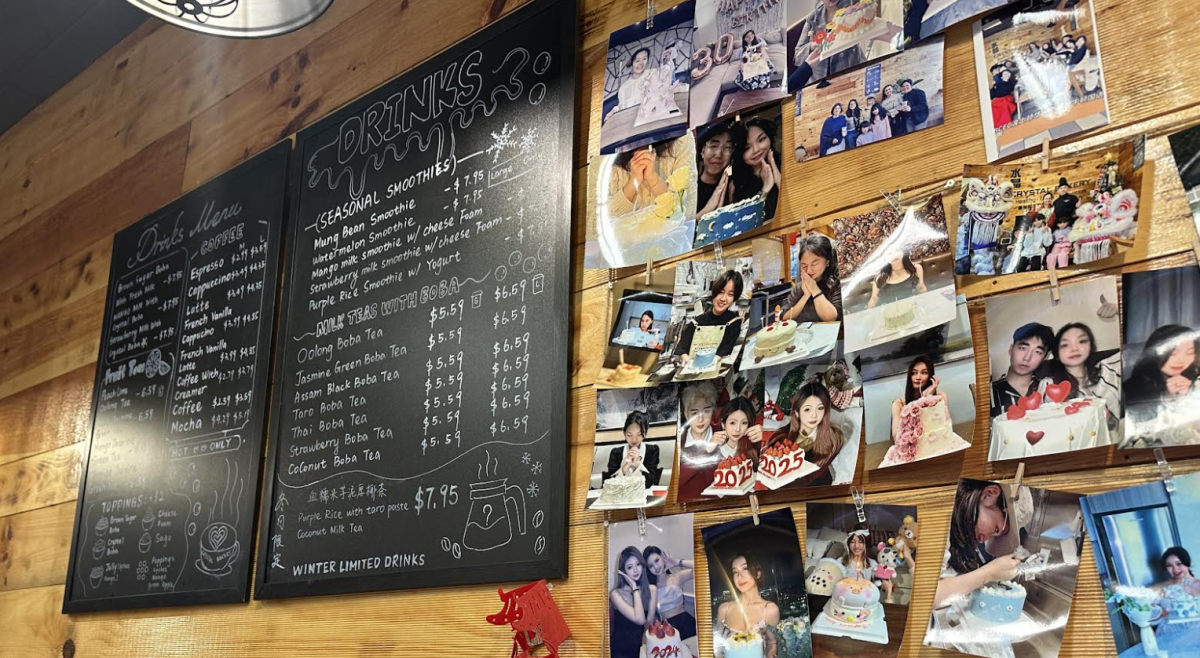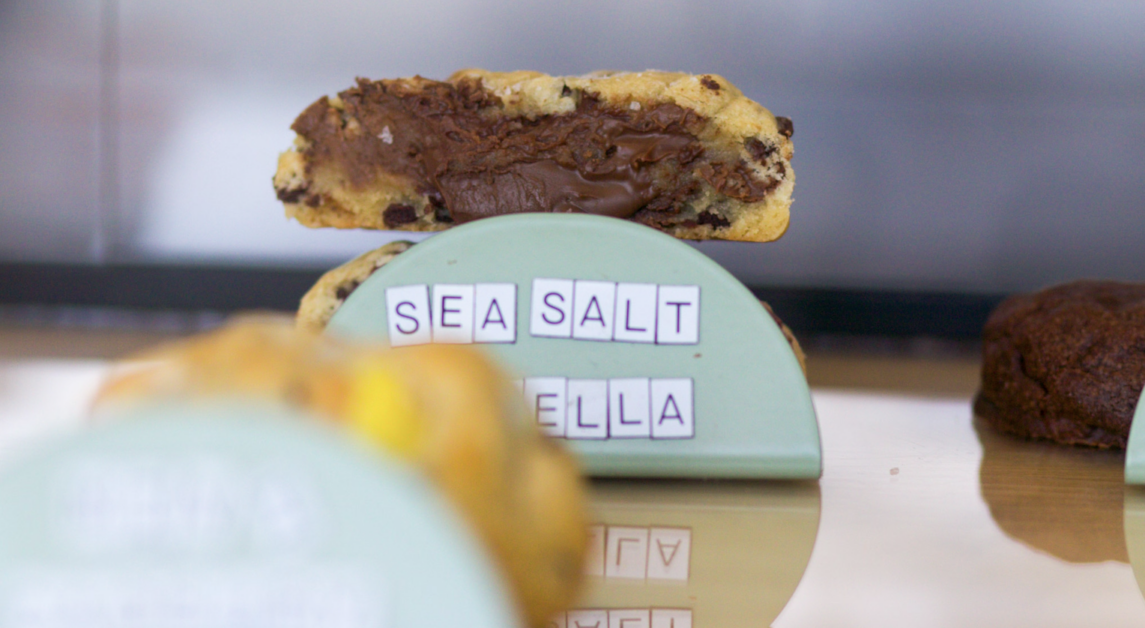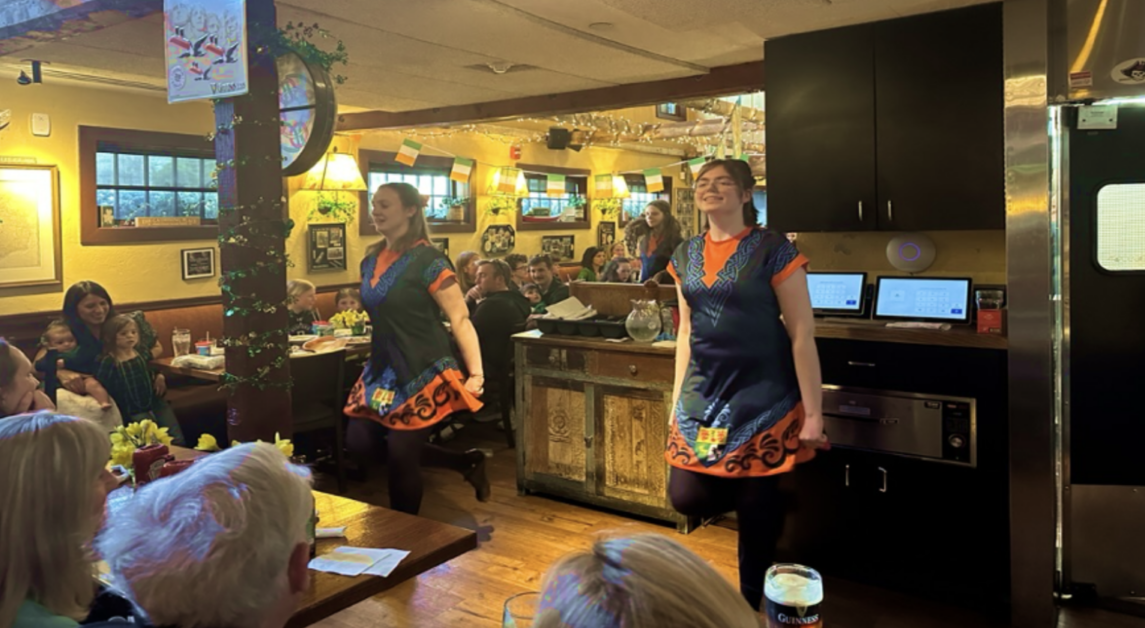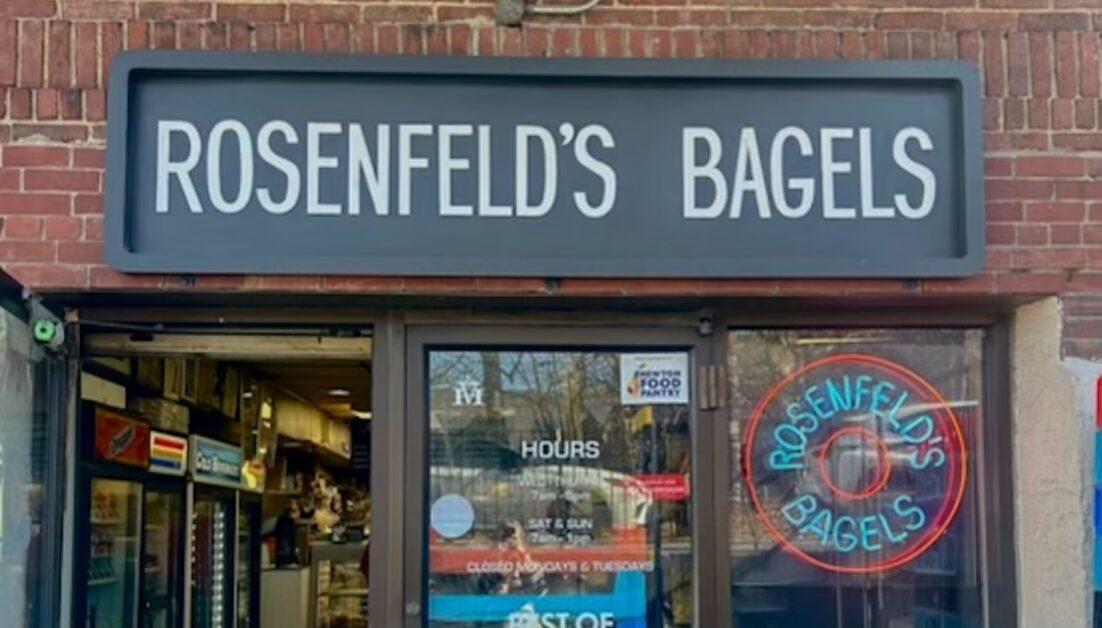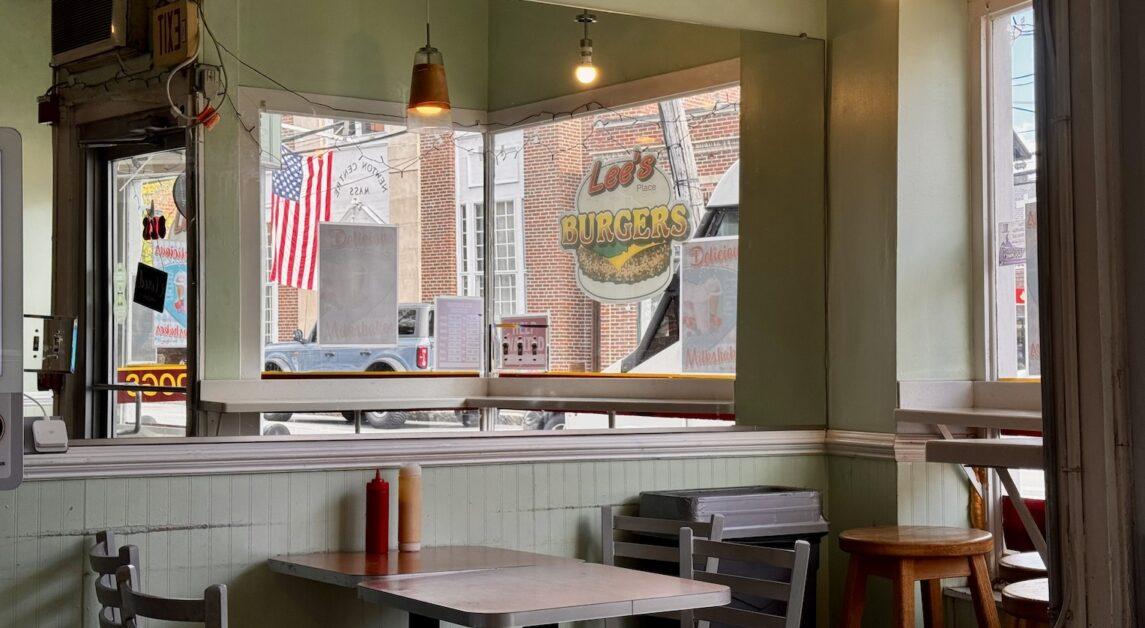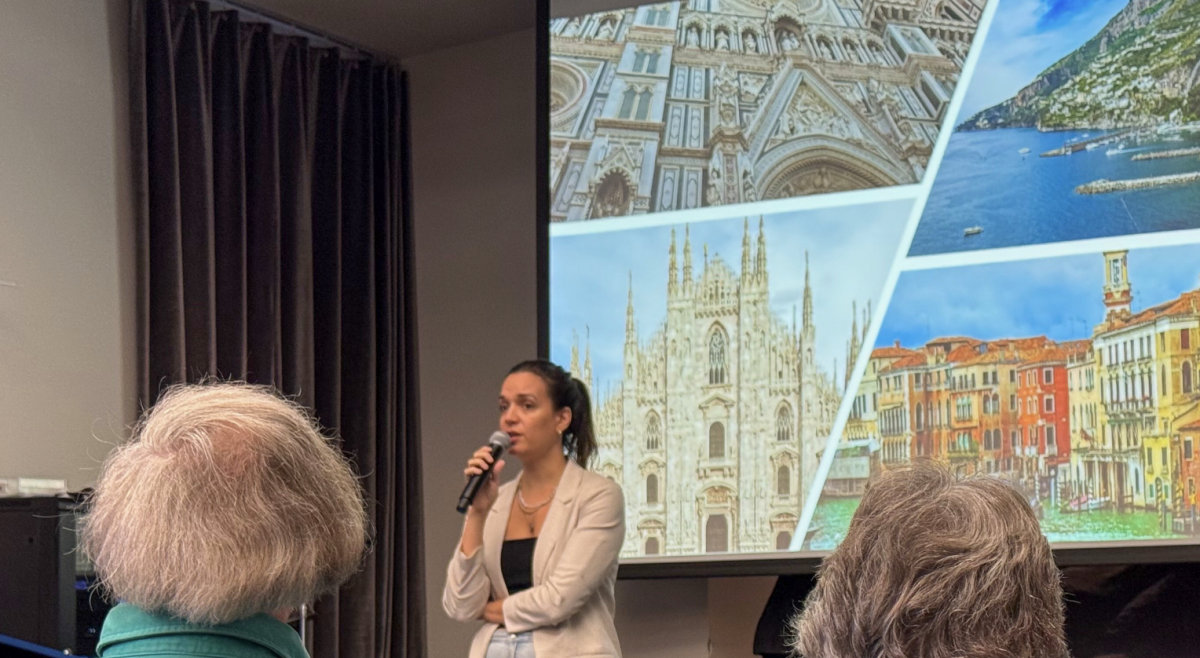But in the daylight, with owner Alberto Cabre as your guide, Casa B softened, and I suddenly noticed how much it feels like an evolved home. Empty at 11 a.m., the Union Square Spanish-Caribbean tapas restaurant gives off less of a chic-and-maybe-intimidating vibe and more of an eclectically welcoming one. Small details like the antique mirrors popped. It was hard not to notice how the staircase, paneled in mismatched antique doors and painted white by Cabre and his wife, stretch to the ceiling.
But Cabre’s finger in front of my nose interrupted these observations, showing me the most important part. Layered on top of the doors are framed sepia-toned photos of Cabre’s family, from his grandfather to his children.
At the foot of the stairs, Cabre fluffed a pillow on an antique blue velvet couch. He looked out over the chef’s bar and larger seating areas, examining the faux-living room that interrupts the sleek dining room with a nod.
“My house looks a lot like this,” he said.
This isn’t a performance of a home. It’s a recreation of one.
Cabre and his wife Angelina Jockovich opened Casa B four years ago. Their story is one that is often told with awe and a bit of fear by those in the restaurant buisness. In the economic downturn, they made the transition from architects to the equally-unstable career of restaurant ownership.
Watching him buzz around Casa B, the creative shift from architect to chef makes perfect sense. “As an architect, you develop this creative process that takes a long time to get some rewards,” he said. “As a cook, that creative process is very short. You just work for a couple of hours and you have people enjoying what you have made.” After one year in culinary school, he did not want to wait to begin cooking his food. Cabre and his wife (also his business partner) began a catering business in 2002. But he had this idea: “We can just bring people into the house and feed them.”
When his wife agreed to the unconventional plan, the underground restaurant Casa Bobonis, named after his grandfather, was born. The restaurant grew via word of mouth—what started as a 45-person email list quickly grew to 500.
The idea of an underground restaurant sounds chic and insidery. It conjures visions of exclusivity, dim candles, and sophisticated people engaging in sophisticated things. But Cabre’s club was more Arcade Fire than Gertrude Stein.
Not that it wasn’t transgressive or cool. The 24 seats filled his home with energy that bounced off the walls painted in multi-saturated colors. The five courses, prix fixe, were experimental and different. But with two little kids running around, Casa Bobonis was, first and foremost, a home.
The food at Casa B is advertised as Spanish-Caribbean influenced tapas, but even that wide-ranging definition does not begin to cover Cabre’s eclectic taste. Two signature Casa B dishes are Atun salteado con ajonjoli (black sesame seared tuna, served over a sweet plantain with a wasabi aioli) and Carne Mechada with Gnocchi de Yuca (a Puerto Rican pot roast Cabre’s mother used to make, and yuca gnocchi sauteed in a brown butter and sage sauce).
Once you know his background, the dishes are put in a unique context—his menu references all the cultures he has touched without strictly adhering to them.
His roots are Puerto Rican, but the tapas style comes from his grandfather, who brought Cabre to Spain when he was a young boy. His wife is Colombian, so her South American influence infiltrates every aspect of the menu. The food goes beyond the Spanish and Latin tradition, too. Cabre’s culinary school training gave him a French and Italian background, and many of his friends from MIT, where he got his masters in architecture, are Asian and have travelled with Cabre through the region.
But Casa B is more than fusion or a mosaic of cultures—the food is witty and smart. Even if you know the cultural reference point, Cabre twists it enough to disarm even the most cultured diner. The Carne Mechada is the perfect example. The translation of “Puerto Rican pot roast” is unusual, and conjures images of something deeply American. But listen to Cabre explain it and the dish becomes impressive and layered.
A traditional carne mechada has the meat stuffed with the onions and chorizo. But Cabre turned this inside out, cooking the meat on top of those ingredients and making sure all the flavors from the stuffing were in the sauce. He then places it atop a playful gnocchi. “We don’t have gnocchi in Puerto Rico, that come Italian,” he said. “But I changed it. Instead of potato, I do it with yucca. But that is what is the flavors of the restaurant.”
More than just the food is disorienting. It is the entire dining experience. “I believe that you have to use your hands when you are eating,” Cabre said. “It is really hard to get people to do that.”
He picked up a distressingly miniature fork and knife to demonstrate his next point.
“You can pinch, or you can spread something.” But that is all his tiny silverware is supposed to be used for. He mimed someone laboring over their food, the mini-cutlery pinched between thick thumbs and forefingers. “It’s just a fried little cheese ball, you should just get it and …” he stopped speaking abruptly and plopped the imaginary cheese ball in his mouth, satisfied with his explanation. “But people don’t want to do that.”
This is the real draw of Casa B. Despite the comforts of a home, there is something disarming about the restaurant. Surrounding the artifacts that are supposed to be found in a living room, there is a slickness of a modern restaurant. Or maybe it’s the other way around. I was never sure.
The menu is bilingual, listing everything in first Spanish and then English, bound in a little book, neat, with words that are familiar, but also words that aren’t. Just asking for a meal can be challenging, with all the hunting and possible pronunciation barriers. It made me insecure. Am I ordering the right thing? Will my poor Spanish accent embarrass me more or less than ordering the English description of Cabre’s beautiful food? Is the tiny silverware a joke, a passive aggressive reminder to get me to use my hands? Or am I rude if I pick everything up?
The homey atmosphere, the ambiguous menu items, the unconventional cutlery—all these things that put make the food Cabre’s own—are his way of singling to the diner, saying, “trust me.” It might not make sense, it didn’t to me when I first ate here. I can’t answer these questions for myself, much less anyone else. You just need to go down the stairs, past the fake living room, and slide into a bench at the chef’s bar. Be irreverent, pick up a gooey cheese ball with your hands. Trust me, nobody will look too hard. You’re suppose to feel at home here.
Featured Images by Emily Fahey / Heights Senior Staff


